Why Do My Toddler’s Feet Look Yellow?
When a toddler's feet look yellow, it's most likely due to a harmless condition called carotenemia from eating too many beta-carotene-rich foods. But if the yellowing is severe, includes their eyes, or is accompanied by other symptoms, it's best to consult a doctor.
Updated September 12, 2025
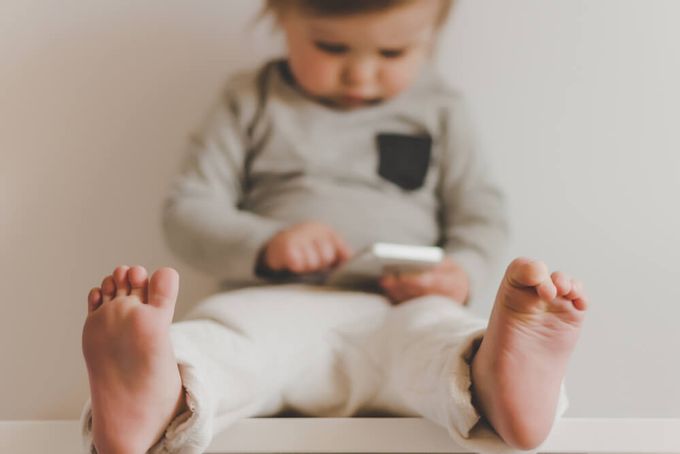
As a parent, your radar is always on for your child's well-being. Every change in skin tone can make you worry. So when you notice a curious yellow tint on your little one’s feet (especially on the soles of their feet), it’s natural to feel concerned.
Let’s explore the most common reasons why your toddler's feet might look yellow and what you should do.
4 Common Reasons for Yellow Feet in Toddlers
Parents often notice the bottom of their toddler’s feet turning yellow. Sometimes it's harmless, but in other cases, it may signal something worth checking. Here are a couple of reasons:
1. Carotenemia (Dietary Causes)
The most common and harmless reason for a toddler's yellow skin is their diet. This condition, known as carotenemia, happens when a child consumes a lot of foods rich in beta-carotene. The excess pigment from these foods is stored in the fat just beneath the skin, giving it a yellowish tint.
Common beta-carotene-rich foods include:
Carrots
Sweet potatoes
Pumpkin
Squash
Oranges and mandarins
Key Takeaway: If your child is otherwise healthy and active, their yellow feet are likely due to carotenemia. The discoloration is harmless and will fade once you reduce their intake of these foods.
2. Jaundice
Jaundice is a condition where the skin and the whites of the eyes turn yellow due to an excess of bilirubin, a yellow pigment produced when red blood cells break down [1]. While it's common in newborns, it can also affect toddlers due to a developing liver or other underlying conditions.
Jaundice is categorized into different types, including:
Physiological Jaundice: This type occurs when a baby's developing liver can't process bilirubin efficiently.
Breast Milk Jaundice: Some substances in breast milk can interfere with bilirubin metabolism, leading to this type of jaundice.
When to Seek Medical Advice:
Jaundice is often a sign that you should consult a doctor. It's crucial to seek medical evaluation if the yellowing is accompanied by:
A high fever
Poor feeding
Lethargy or unusual drowsiness
Pale stools or dark urine
3. Skin Conditions and Allergies
In some cases, specific skin conditions can cause a yellowish or discolored appearance. While less common, conditions like psoriasis or eczema can cause inflamed or discolored patches on the skin, which may appear yellowish.
4. Dietary and Nutritional Factors
A toddler's diet can influence their skin pigmentation, too. Foods like carrots, pumpkins, and sweet potatoes are rich in beta-carotene, which causes a yellowish tint in the skin, known as carotenemia [2].
Note: Other dietary factors can affect skin pigmentation, including iron deficiency, a lack of Vitamin B12 & B3, and too much Vitamin A.
How to Get Rid of Yellow Feet in Toddlers
If diet is the cause, reducing beta-carotene foods like carrots or sweet potatoes will help. The color usually fades on its own within weeks. If the yellowing is linked to jaundice or other medical conditions, treatment will depend on the doctor’s guidance.
While diet is the most likely cause, being aware of all the possibilities is key to ensuring your child's health. If you suspect a medical condition or an allergy may be behind the change in color, it's best to have a healthcare provider or a podiatrist check it out.
For proactive care and to ensure your child's feet are developing correctly, explore our podiatrist-designed shoes. They're crafted to offer the maximum comfort and support for growing feet.
References:
- A. Joseph and H. Samant, “Jaundice,” StatPearls - NCBI Bookshelf, Aug. 08, 2023. Available: https://www.ncbi.nlm.nih.gov/books/NBK544252/
- WebMD Editorial Contributor, “What to know about yellow palms,” WebMD, Jan. 22, 2025. Available: https://www.webmd.com/diet/what-to-know-yellow-palms
Disclaimer: First Walkers' information is intended for educational and informational purposes related to toddler footwear and feet. We encourage you to consider individual circumstances and consult qualified orthopaedists about specific conditions.
FAQs
Can dehydration cause yellow skin?
No. Dehydration can make skin look dull, dry, or less elastic, but it does not cause yellowing. Yellow skin usually signals liver issues or excess pigments like carotene.
What foods cause carotenemia?
Carotenemia is caused by eating too many carotene-rich foods, such as carrots, sweet potatoes, pumpkin, squash, and leafy greens.
What virus causes jaundice?
Several viruses can cause jaundice by affecting the liver, most commonly hepatitis viruses (A, B, C, D, and E).
Can vitamin D deficiency cause sallow skin?
Yes. Vitamin D deficiency can contribute to a pale or sallow appearance due to its role in skin health and overall vitality, though it isn’t the only cause.
Related Articles
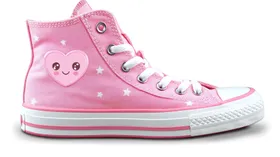
10 High-Top Shoes for Girls: Stylish and Supportive Picks
Amy Elder
December 6, 2024
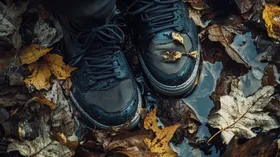
10 Best High Top Shoes for Boys for Ankle Stability and Strength
Bhashwati Deb Barma
December 5, 2024
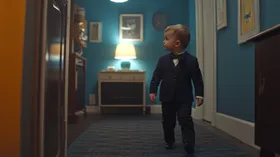
7 Formal Toddler Boy Shoes for Dapper Little Gents
Jasrah Javed
December 6, 2024
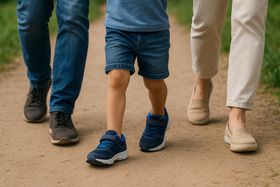
10 Best Supportive Kids Shoes to Correct Pronation
First Walkers
October 20, 2025
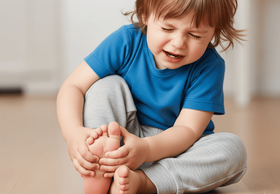
What Happens When Toddlers Wear Small Shoes? 6 Risks of a Tight Fit
Jasrah Javed
September 15, 2025
Related Posts
Babafemi Adebajo
Do You Need a Prescription for Orthopaedic Shoes?
Babafemi Adebajo
Understanding the Waddling Gait in Children: Parent’s Guide
Babafemi Adebajo
How to Help Dyspraxic Kids Tie Their Shoes?
Jonathan Coom
Should You Pop Your Child's Foot Blisters?
Dr. Leah Alexander